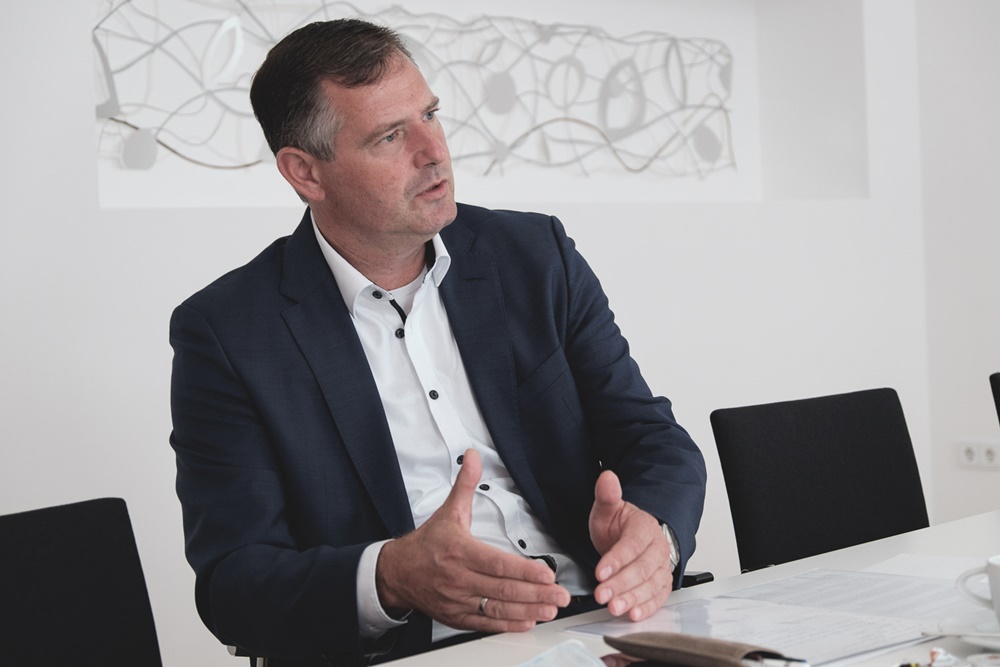P3 5-6/2021 en
Leonhard Kurz
Sustainability and Finishing are no Contradiction
Finishing Technology
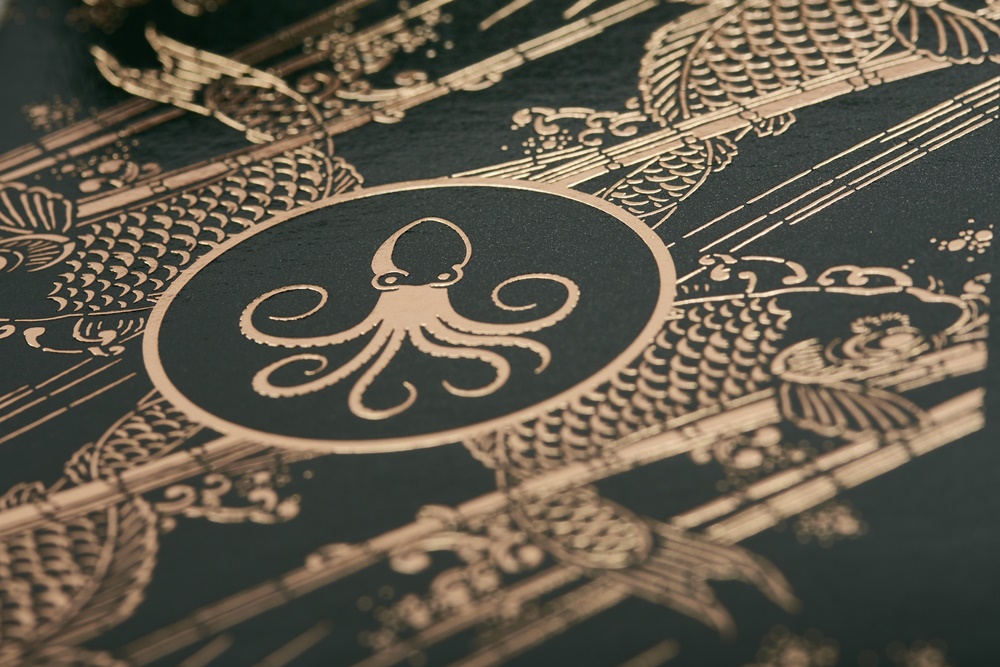
Making products unique through finishing: Brands that want to stand out don’t get around eye-catching packaging in light of the huge range of products on offer. At the same time, meeting customers’ increased demands for sustainability is a major challenge.
Brand manufacturers know the problem: The large variety of products at the POS makes it increasingly challenging to stand out from the crowd with one’s own product. Packaging plays a key role here; it not only conveys a crucial part of the product statement but often provides the decisive differentiating feature that attracts the consumer’s attention. In the end, the product itself must impress with its properties, but successful finishing of the packaging can often be the crucial factor that makes sure the item ends up in the shopping cart.
Making products unique through finishing: Brands that want to stand out don’t get around eye-catching packaging in light of the huge range of products on offer. At the same time, meeting customers’ increased demands for sustainability is a major challenge.
While, on the one hand, the battle for customer attention is increasing, on the other hand, buyers’ demands for the sustainability of the individual products and their packaging are growing too. Supplying new and efficient solutions that add shine to products and their packaging in the truest sense of the word, while still meeting ever-growing environmental standards, is becoming a balancing act for manufacturers. But the thin-film technology and finishing expert Leonhard Kurz has the answer. For decades, the company has been striving towards sustainable working and the respectful use of existing resources.
Markus Hoffmann, Member of the Kurz Executive Board, is certain that there is hardly any industry that has taken greater steps towards sustainability in recent decades than the printing sector. In his opinion, the entire industry’s successes are already very far advanced. They include, for example, the continuous reduction of the energy costs incurred in production and processing, the cleaning and treatment of exhaust air and the proper handling and disposal of wastewater, for instance through wastewater pretreatment or the use of consumption systems. Establishing and maintaining environmental standards in such factories ensures continuous improvement. Nevertheless, and in spite of this positive basic assessment, Kurz is far from complacent and believes that there is still room for improvement when it comes to sustainability.
So if the industry continues to exploit the optimization potential, maintains its commitment, educates customers, and actively communicates successes, the step towards a greener future can be taken quickly. There are many advances to expand the initiatives for sustainable action in printing, packaging, and finishing. However, it is important to constantly face new challenges in the process. It is well known that plastic carriers are used in embossing processes, from which the decorative coating layers are removed during the transfer process. This means that, compared to laminates, this very film does not remain on the surface but only serves to transfer the wafer-thin decoration layer to the respective print substrate. The disadvantage is that this PET carrier nevertheless accumulates as a residual material in the transfer process and has so far been primarily thermally recycled and used for energy production due to its high calorific value, or used as a substitute fuel instead of coal and gas in the energy-intensive process of cement production. But it was not possible to at least partially recycle the PET carriers into the cycle. Does all this ultimately mean that printing and finishing are in conflict with sustainability? No - at least according to the experts from Kurz.
For the company management and the Kurz family, the path from ambitious goldbeater to global, sustainable, and innovative finishing expert is clear: “We want to be the most sustainable company in the industry and deliver on our promise to our customers to make them the green leaders in their industries,” explains Markus Hoffmann. However, this sustainable idea must be brought into line with what the company is known for among its customers: Finishing according to high quality standards.
Challenging an entire industry
Holistic sustainability in the finishing of packaging sounds like a huge responsibility and challenge. On the one hand, the packaging itself consumes resources and, on the other hand, further waste products and emissions are generated during the finishing process. “We’re not fooling ourselves,” explains Markus Hoffmann and adds: “Like many sectors, the printing, packaging, and finishing industry is also subject to the rule that only doing away with printing, finishing, and even the packaging itself would be the most sustainable alternative.” Clear words from the member of the Kurz Management Board, who is responsible for the areas of graphic finishing solutions and the associated machines of the thin-film company, among other things. And words that also demonstrate a realistic assessment of the situation at Kurz. After all, it is the main business of many companies - and of Leonhard Kurz too - to transfer the thinnest decorative coating layers to the customer’s products using these PET carriers, so that they in turn get an individual and attractive look and thus make the products unique and eye-catching.
For Ralph Hopfensitz, however, the self-critical approach that is practiced in the company is not in contradiction with what is produced by Kurz for processors, printers, and their customers, which often include brand manufacturers. “Finishing is of course nice to have but not a must-have. But a world completely without nice-to-haves isn't actually very nice,” says Hopfensitz, also a member of the management at Leonhard Kurz. And it is precisely in this tension between the pursuit of greater sustainability and the entrepreneurial goals of the printing, finishing, and packaging industry that there are numerous other market participants in the industry in addition to Kurz. They all need to continuously develop and optimize their activities in order to take into account the important issue of sustainability.
How do you become a green leader?
In view of the changing customer requirements and an ever-increasing demand for sustainability, printers and processors also rely heavily on the responsibility of the companies supplying them - innovative service providers who share this demand and meet it. “Sustainability has become part of our DNA because, on the one hand, it is also exemplified by the owners at Kurz. On the other hand, we’ve been scrutinizing our actions every day for years to see whether we have actually found the most resource-efficient solution,” explains Ralph Hopfensitz. In addition to thin-film technology, the brand core also includes the path to Life Cycle Thinking (LCT). This approach envisages being made aware of the impact that daily work has on the environment and reacting to this in terms of sustainability. Leonhard Kurz summarizes this claim for its customers under the slogan ‘Be a Green Leader’ and at the same time offers them the opportunity to assume responsibility for their products and industries. How does that work? “In part through very close coordination and a lot of consulting services,” Hopfensitz says, adding: “We want to educate our customers about what happens to their product after finishing. Will it remain recyclable? What are its properties? What is visually possible? We clarify all of these questions in advance. Only then can the customer make the right decision for them in a truly conscious and holistic manner.”
Recosys® - another building block for reducing CO2 emissions
“Together we are working intensively on new solutions, even better alternatives, and a sustainable future. In this way, we are establishing a process that saves resources and reduces CO2 emissions,” summarizes Markus Hoffmann. However, new standards in terms of environmental compatibility, which Kurz sets time and again, give converters the opportunity to reduce their carbon footprint by participating in the return system. They also enable brand manufacturers to attractively finish their products and packaging, and thus ensure an attention-grabbing presence at the POS. Kurz has now set such a benchmark with the Recosys® program and wants to offer as many market participants as possible significant added value. This return and recycling system for PET carriers hits the pulse of the times in the graphic industry and proves particularly influential when many companies pull together.
What exactly is behind it?
After years of research, Kurz has succeeded in producing a recyclable plastic, Recopound®, from the substrate material used to transfer the coating layers in the finishing process. “We are now able to recycle a large part of the carrier films, which were previously primarily used for energy generation,” says Dr. Markus von Beyer, responsible for the development of environmentally friendly and sustainable technologies at Kurz, about the successful work of his team. The plastic pellets obtained can be further processed into high-quality components using the injection molding process. For Kurz, however, this breakthrough in sustainability was just one of the steps on the road to a greater goal. Markus von Beyer: “One day, we want new PET carriers to be created from the recycled carrier film. Ultimately, we want to create a recycled material that can be used to make new PET films for our own transfer products. Only this step will fully close the loop.”
The path to the closed loop
“We invest millions of euros annually in all projects that make our production, but also our products, even more sustainable. This investment in a vision, is also a signal for the entire industry,” Markus Hoffmann states, explaining the ambition. In fact, 100 percent of the electricity requirements of Kurz’s German production facilities are already covered by green electricity. In addition, the company’s own systems are being further developed in such a way that they consume significantly less energy. “Our overarching goal is closed loop, an actual cycle that conserves resources and does not waste them. We want to lead in this way and take the industries in which we operate with us. At the moment, we see that many of our market participants don’t yet have this issue on their agenda. That’s why we want to set a positive example,” says a determined Hoffmann.
A look back in time shows that, for Kurz, being a sustainability pioneer is not a new concern. In the early 1970s, new solutions for environmental issues were deployed - driven by an entrepreneurial family that was aware of this responsibility at an early stage. Closed cooling circuits and after-treatment technologies were introduced long before they became mandatory. Chairman and family member of the 5th generation of the company, Walter Kurz, adds: “In the 1980s, new methods for solvent recovery were introduced. State-of-the-art systems were used to ensure fire and leak detection. At the beginning of the 1990s, our first thermoreactor was put into operation, which enabled the thermal combustion of exhaust gases and thus heat recovery. The energy was eventually fed back into our own processes.”
Joining the United Nations Global Compact is also intended to boost the company’s commitment and thus help to turn the ‘Green Leader’ vision into reality - not only for Kurz, but also for its customers.
The dimensions of sustainable finishing
From the point of view of Kurz experts, there are several levels that must be reconciled in order to lead the finishing industry into a sustainable future. On the one hand, from their point of view, it is becoming increasingly important to raise customer awareness of the advantages that meaningful finishing can bring and thus create transparency. “The advantages of finishing are obvious - studies confirm that finished packaging is often perceived more quickly, which influences the purchase decision. At the same time, a large number of tests and certificates confirm that the packaging remains recyclable thanks to our solutions and can be assigned to the right fraction in the recycling plant,” says Markus Hoffmann.
Another step is that Kurz acts as a system provider alongside manufacturers and finishers and has been helping them to supply the finishing industry - whether digital, hot, or cold transfer - with ever newer and resource-saving process solutions for years. But Kurz is not only looking for more efficient solutions in customer processes. The company itself also relies on energy saving, exhaust air utilization, and wastewater treatment in its production. Only if the entire value chain can be made more sustainable can a lasting impression be made in the carbon footprint of the finishing industry.
And even if Recosys® does not currently make money yet, according to Kurz, it is a fundamental component of the strategy. The return and recycling of residual materials develops its maximum performance when many companies participate. This is precisely why the thin-film experts continue to invest heavily in technological innovation and want to roll it out worldwide.
The last important field that Kurz sees in its sustainability campaign is at the beginning of production. The procurement of raw materials, traceability of the supply chain, and close cooperation with partners and suppliers on site are intended to ensure that environmental standards are observed and monitored throughout the entire process.
“We are delighted to see how many companies with a great sense of responsibility are working on their own sustainability strategy and expanding it,” explains Markus Hoffmann, and Walter Kurz adds, “We hope that we can lead by example in many areas and also motivate further companies to invest even more in the present, for the next generations.”
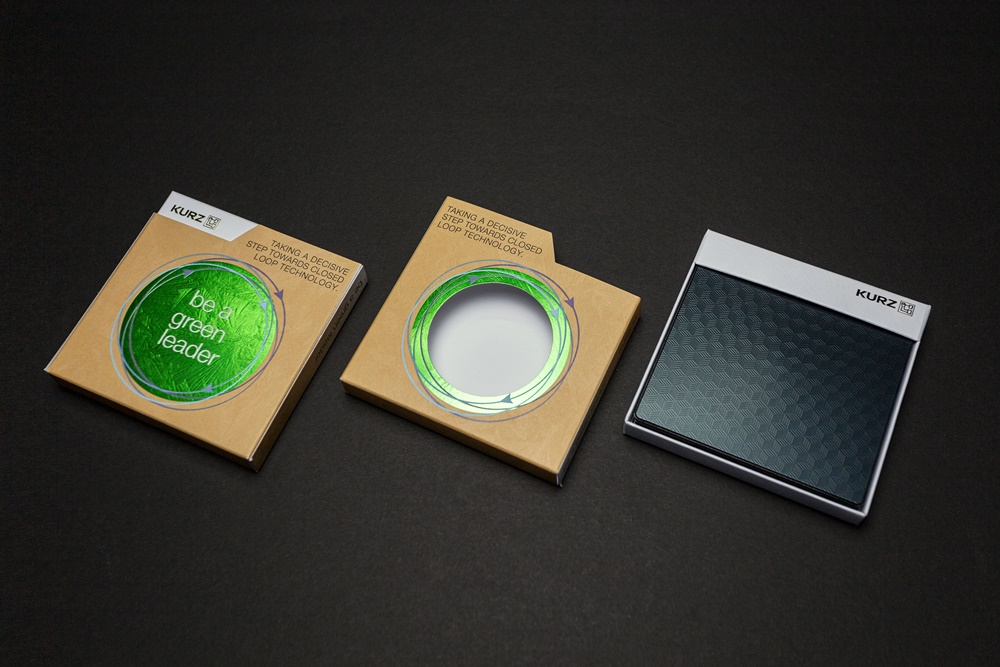
Kurz not only strives to be a green leader itself but, above all, wants to help its customers achieve this and thus give them a competitive advantage.
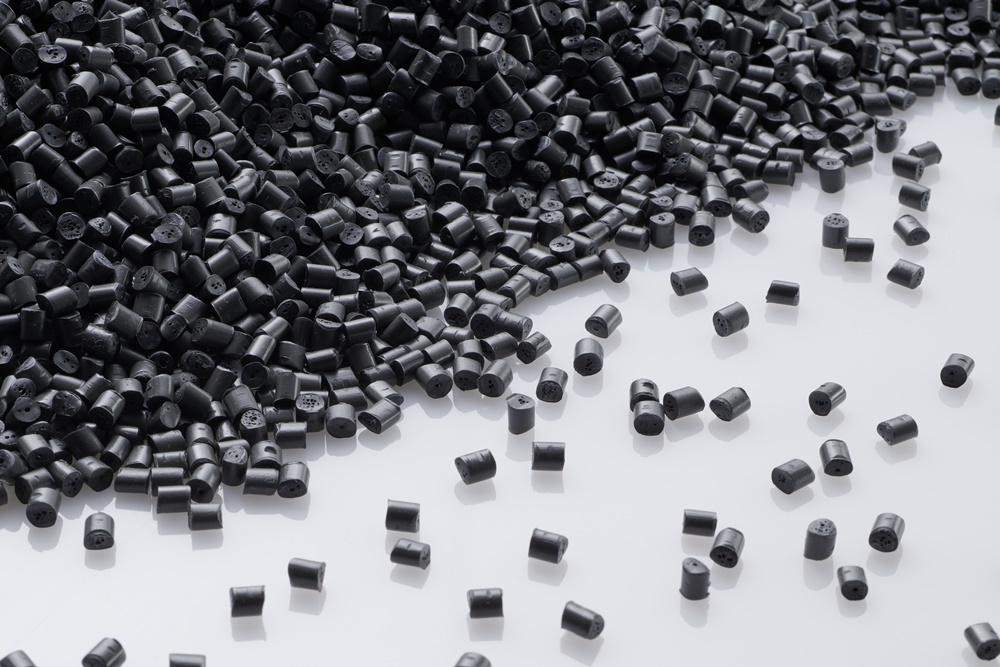
The injection-molded material Recopound® originates from the Recosys® recycling system and can be further processed into plastic parts using the injection molding process. The material is based on carrier films from the finishing process.
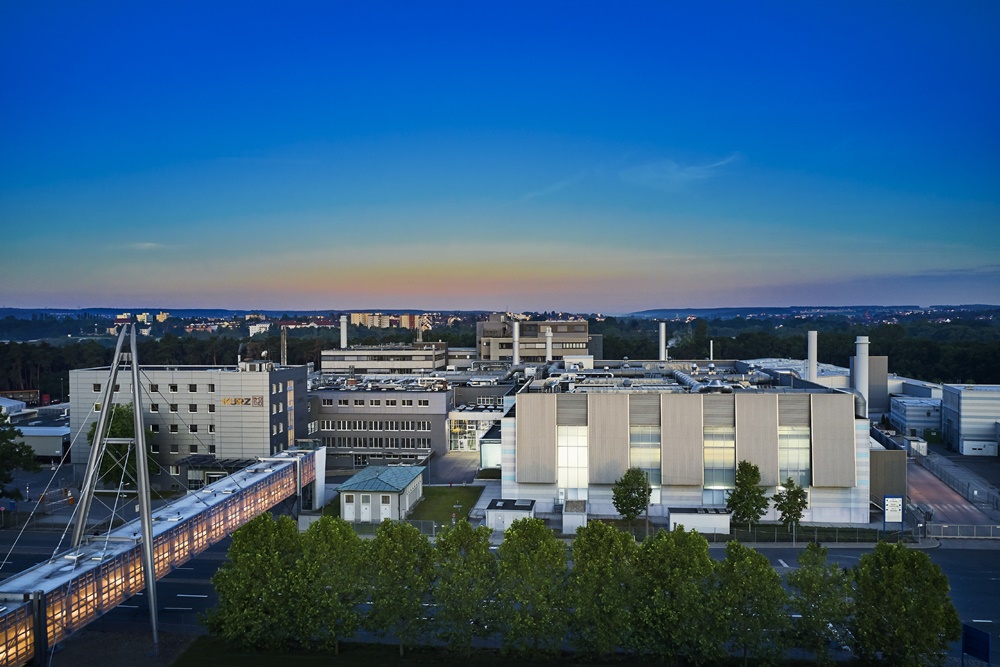
The company headquarters in Fürth, Germany: Among other things, Kurz uses large-scale photovoltaic systems to ensure that the electricity at the two German sites is environmentally friendly.
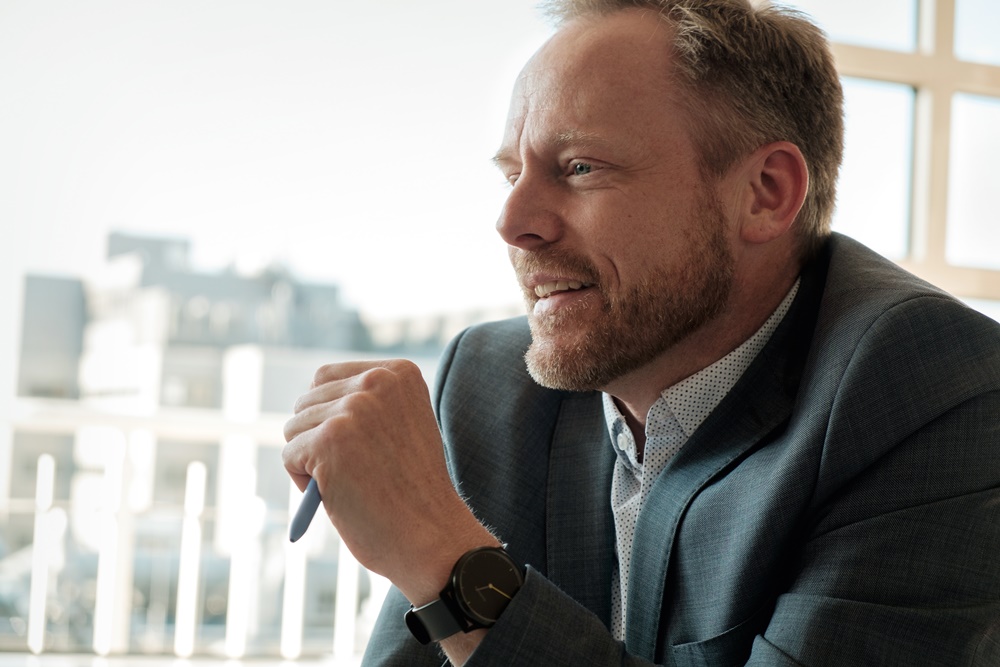
Markus Hoffmann (top) and Ralph Hopfensitz (bottom) are members of the management team at Leonhard Kurz, and in their areas are also responsible for the sustainable further development of the company and its products.
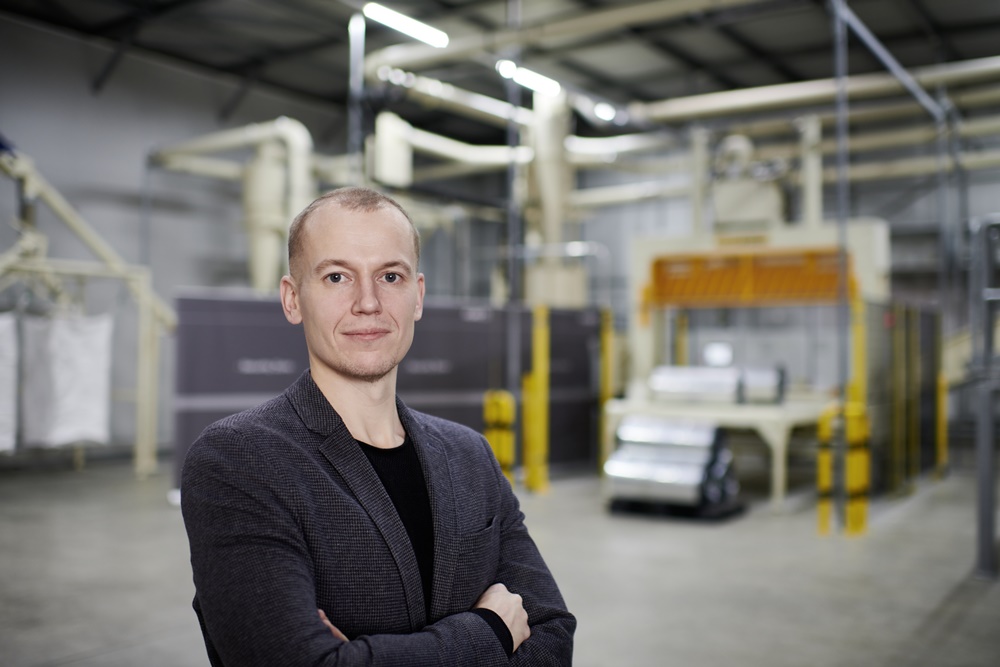
Markus von Beyer heads the team that has developed Recosys®, among other solutions, as Head of EHS & S.
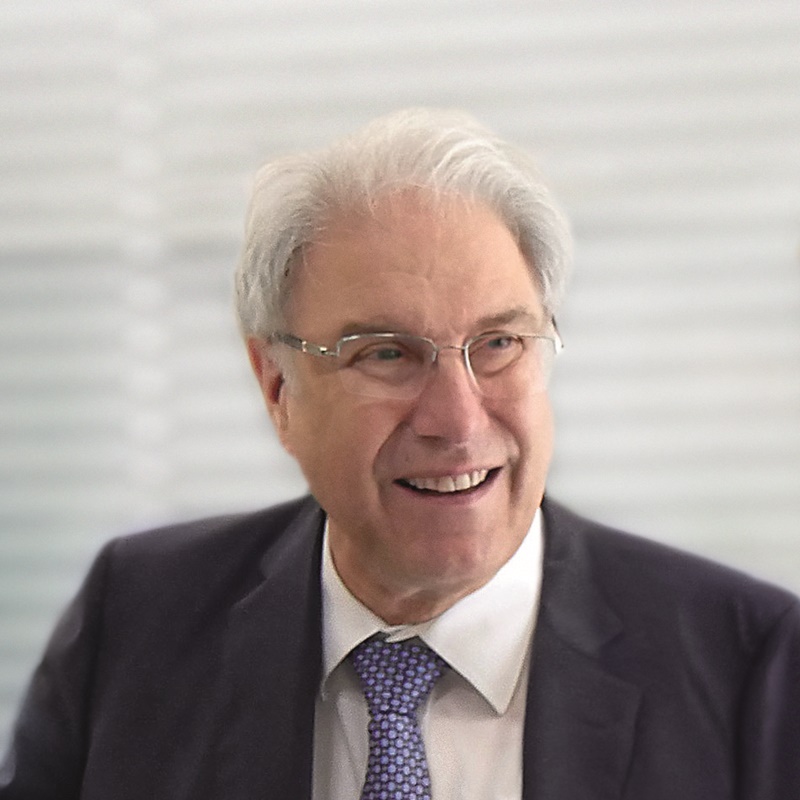
Walter Kurz, Chairman and 5th generation family member in the company, is aware of the company’s responsibility to make the world better for future generations. The family encourages and promotes all measures that support this project.
Editor: sbr
Images: Leonhard Kurz






